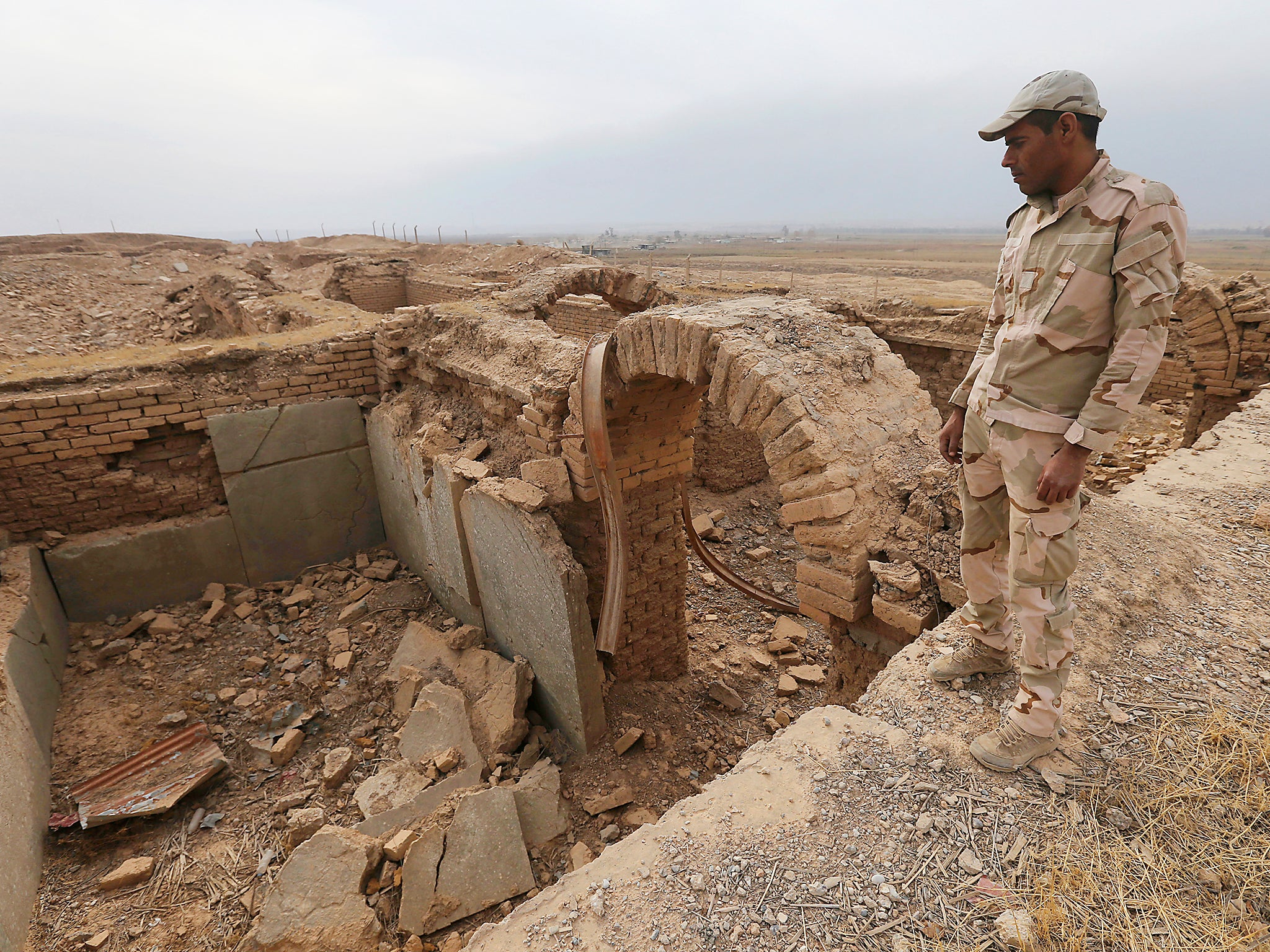Doomed Isis seeks to make its mark on history another way – by taking sledgehammers to ancient ruins outside of Mosul
Secretly it also loots whatever it can sell from the ancient town of Nimrud on the global antiquities black market to make fast cash

Iraqi forces retook the ancient town of Nimrud in recent days and discovered the true extent of destruction wrought by Isis against its three-thousand-year-old ruins. With electric drills and sledgehammers, they smashed up the famous winged bulls carved by the Assyrians so many centuries ago and bulldozed other parts of this great historical treasure.
Why should we care? Many might ask this question when you think of hundreds of thousands of people killed or displaced. Surely it’s the height of bad taste in these circumstances to mourn the loss of archaeological sites? But that overlooks an important point about Isis. It wrecked Nimrud for the same reason it plundered Palmyra – to try and wipe out the memory of Iraqi and Syrian people.
Societies have long sought to protect and preserve their cultural heritage, for reasons ranging from education and historical research, to the desire to reinforce a sense of identity. In times of war and conflict, cultural identity and cultural heritage become all the more important. Buildings, monuments and symbols of a culture that speak of shared roots acquire an increased significance. Accordingly, they can become targets of violent and oppressive action that seeks to destroy the symbols valued by enemies or the iconography associated with alternative faiths and traditions.

Isis is a nihilistic movement that believes it has established a kind of ‘year zero’; nothing that happened before matters and history only truly begins with Isis. The fact that the first Muslim rulers of the Middle East and all those who have governed since chose not to level structures such as these is telling of the terrorists’ mentality.
The great Islamic empires were confident enough in their ideas and values not to have to carry out wanton acts of vandalism. The past could be acknowledged while at the same time embracing the revealed truth of Islam. But Isis does not have this underlying confidence. It knows the clock is ticking against its ‘so-called caliphate’ and the territory it has illegally seized from the Iraqi and Syrian people.
So it has to make a mark quickly. In seeking to make its mark on history, Isis blows up shrines, mosques, churches, temples and ancient cities. Secretly, it also loots whatever it can sell on the global antiquities black market to make fast cash. In doing all this, Isis knowingly removes a part of our historical memory – what it meant to be Iraqi or Syrian. It hopes that by erasing the achievements of our ancestors, it can reshape our identity.
“Where they burn books, they will, in the end, burn people too.” These words by Heinrich Heine are now engraved on a plaque on the Bebelplatz in Berlin, where the Nazis stoked their literary bonfire in May 1933. What was done then was horrific and is horrific now. Not because the books burnt on that day were more important than the millions murdered by the Nazi regime, but because they were part of the same process of deliberate destruction and erasure of culture, heritage and people that ran counter to an extremist group’s version of the world.
Mourning the loss of Nimrud – or Palmyra in Syria and the Buddhas of Bamiyan, destroyed by Taliban in Afghanistan in 2001 – is not unsympathetic to the suffering of the people in these places.
But instead, seeing Nimrud so wounded and desecrated, like the people of Mosul, makes us redouble our determination to see Iraq freed of these thugs. Every church they have tried to pull down, we will make the bells ring again. Every mosque they have bulldozed we will rebuild anew. That is the real future for Iraq.
Join our commenting forum
Join thought-provoking conversations, follow other Independent readers and see their replies
Comments